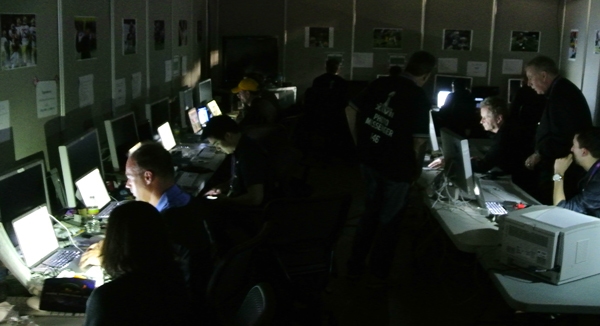Share
How Metadata Increases the Worth of Your Photos
If you aren’t familiar with it already, adding metadata to photos is a great way for a photographer to tie crucial information to their images. Y...

If you aren’t familiar with it already, adding metadata to photos is a great way for a photographer to tie crucial information to their images. You can attach tons of important info to your photos with metadata, whether it’s your copyright information or organizing keywords.
Dennis Walker has seen the photography world go through a lot of changes since he began developing software. Back when he first began working with photo metadata, online storage and sharing networks were a mere twinkle in Mark Zuckerberg’s eye. But the practice of attaching metadata to images still holds true today. When hundreds of thousands of your images can now be stored in the cloud, it’s crucial to add important information to each image in order to easily manage and find your photos.
In this interview, Dennis tells us how metadata started out, and how the pros use it to organize and protect their images.

Peter Turnley blends in with the locals while shooting a Rumba dance in Havana, Cuba (Photo by Dennis Walker)
Can you tell us about how metadata standards got their start?
A: The IPTC (International Press Telecommunications Council) defined a specification for various news related metadata, things like caption and bylines, that existed many years prior to the age of digital photography. When newspapers adopted digital photography (one of the clear early beneficiaries of the technology), they wanted to embed this IPTC metadata into photos. As I liked to say long ago, a picture may be worth a thousand words, but a picture without words is useless. This is obviously a bit extreme, especially since nowadays many social media sites like to strip pretty much all metadata and apparently not many people really give a hoot. But for newspapers, a photo without a caption is not very newsworthy (unless its content is obvious like a celebrity), and so IPTC metadata is required.
The first real digital camera designed for photojournalism was the NC2000 (for News Camera 2000), which was made by Kodak and sold exclusively through The Associated Press. Unfortunately Kodak didn’t have any way to embed IPTC metadata directly into the photos.
How did Photo Mechanic get its start from this?
In 1995 I attended a photojournalism workshop and one of the instructors was David Breslauer. His big deal was to get photographers to enter a caption right up front because the sooner you add this info, the less likely you were to get it wrong due to fading memory. And the only way to attach any metadata was to wipe out the shooting info using Kodak’s plug-in. I decided that there had to be a better solution.
My first stab at this was to create a simple application I called “Archive Mechanic”. Back then it was common to call these RAW files “archives” since they were like a negative. Archive Mechanic would let you enter a number of common IPTC fields like caption, photographer, city, etc and then you could select a folder and batch copy the files from the camera hard disk (yes a rotating magnetic platter) to your computer and AM would format your metadata into the standard IPTC record and embed this into the DCS TIFF file during the copy.

Photo editors from The Associated Press continue to work editing photos during the power outage in the 3rd quarter of Super Bowl XLVII in New Orleans. (Photo by Dennis Walker)
How does Photo Mechanic make it easier for a photographer to tag copyright and photo credit information into their files?
A: One of Photo Mechanic’s key concepts is called the IPTC Stationery Pad. This gets its name from the early days of the Macintosh (aka Mac) where a “stationery pad” represented a template for any sort of document, like a fax header page for example. In the case of PM, the IPTC Stationery Pad is where you set certain fields that are common for a group of photos, and then PM can apply these fields in a batch to entire sets of photos. Of course credit fields such as the photographer and copyright, or even contact information, are obvious fields to have batch applied, and the obvious time to do this is during the ingestion of photos from the camera memory card to the computer. So once the common fields are setup with the IPTC Stationery Pad, the user doesn’t have to really think about this anymore – it just happens.
You have a lot of first-hand experience with working with large batches of photos at events like the Super Bowl and the Olympics. Can you explain how Photo Mechanic assists with captions and credits at events like these?
A: You could say that Super Bowl is just another football game but there is a lot of money invested in this particular event. For example The Associated Press, who I’ve worked with a lot, will run Ethernet (with a fiber optic link) from their “editing” trailer in the parking lot to the field sidelines for manual ingesting of cards, to particular seats in the stadium such as the end zone corners for fixed photographers, and to remote overheads that are triggered by someone in the stadium. There are tens of thousands of photos that are streamed into the trailer during the game, and all must have the correct photographer credit and eventually a caption that correctly identifies the subjects (e.g. the players). The sooner the better.
The key to all of this is what we call Code Replacements. Most sports photographers understand the concept of typing in the jersey number of an athlete (the “code”) and having this translated into the player’s name (the “replacement”). This is a very simple concept (and often approximated by other utilities), but it is only the beginning of what Photo Mechanic can do with Code Replacements. Because PM has another concept called “variables” which expose certain metadata (e.g. IPTC or Exif fields), it is possible to create very sophisticated workflows that just work automatically. This is the level of automation that is necessary to handle big events like Super Bowl.
How do you think metadata will be important to photographers in the future?
A: The more that photographers rely upon remote storage of their photos, whether it is the “cloud” or peer-to-peer, the more critical it will be to identify photos with metadata so they can be found. If a photographer has all their photos simply accessible via their local or attached hard drive, then the file system is often sufficient for managing and finding photos. The organization of photos on one’s computer, for example using dated folders or folders by project, is itself a form of metadata. But once those photos “disappear” into some offline “space”, metadata is the key to making the photos accessible, and the richer the metadata the easier the search.
Regarding photo “sharing”, due to the complete lack of respect for photographer credits and copyrights that exists in the social media web, where metadata is regularly stripped in its entirety, photographers who care about their copyrights and ownership (licensing) are forced to place their metadata offline, separate from their photos. Expecting embedded metadata to survive one bounce across the social web is a pipe dream – poof! That is why organizations like PLUS, spearheaded by Jeff Sedlik, are crucial to photographers’ rights moving forward.
Otherwise we have a gazillion photos, each “worth a thousand words”, all worthless (aka free).



